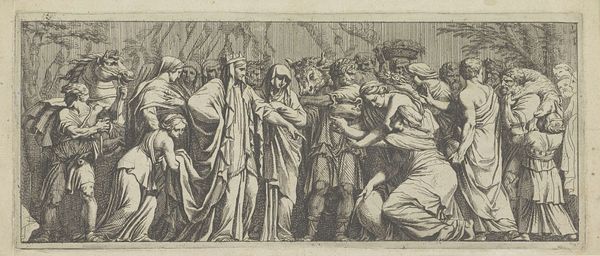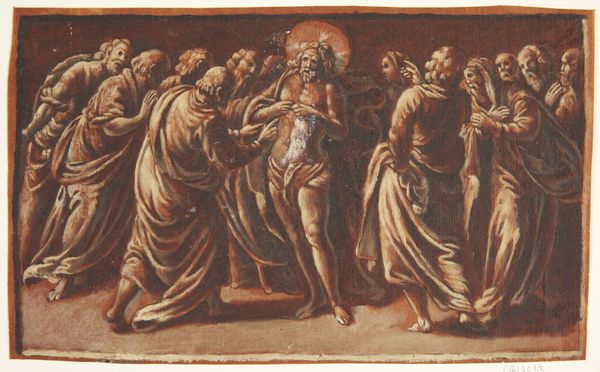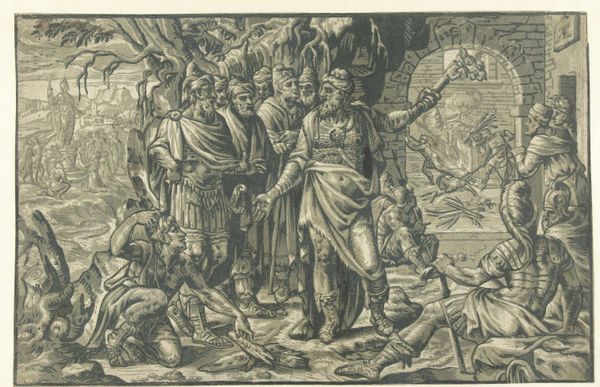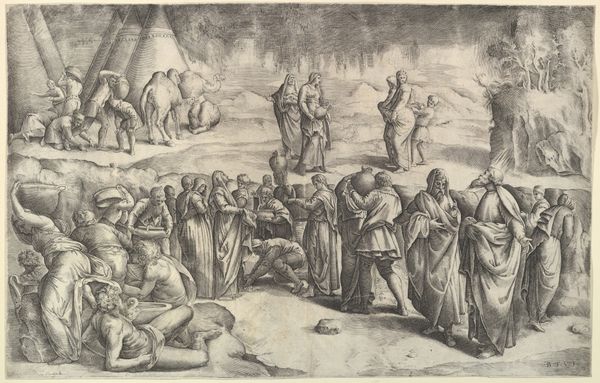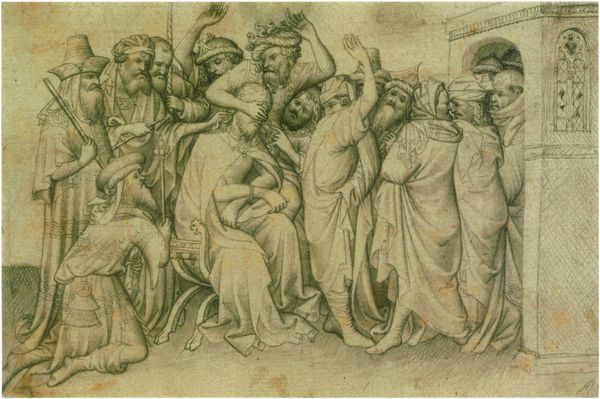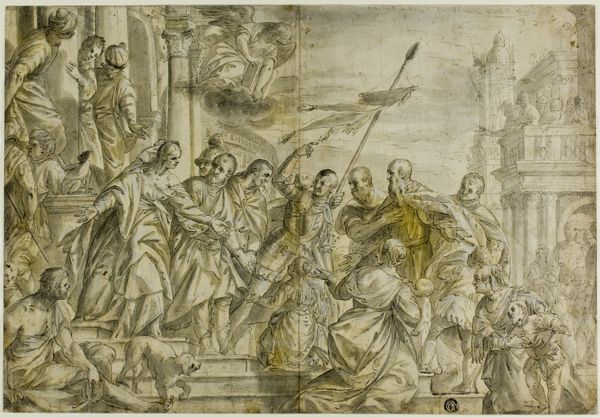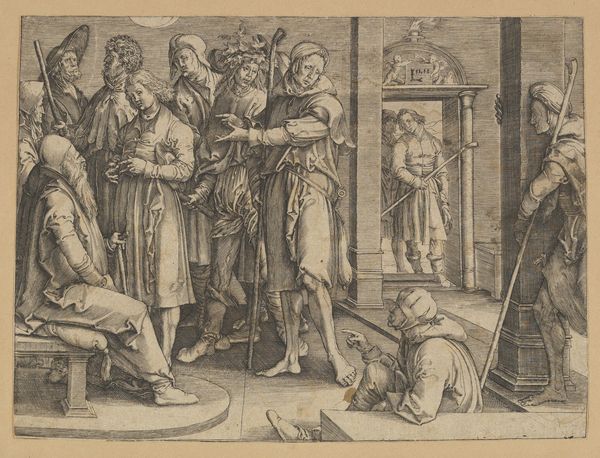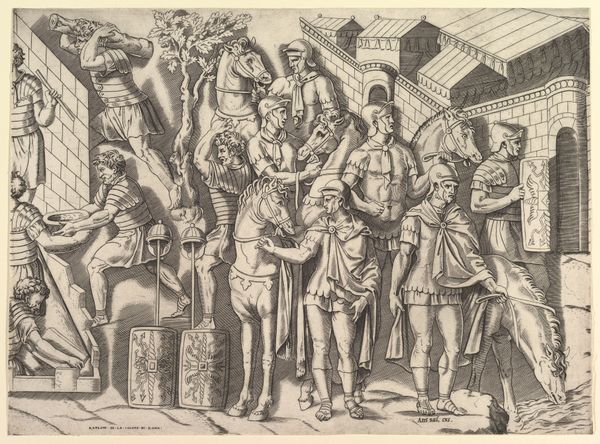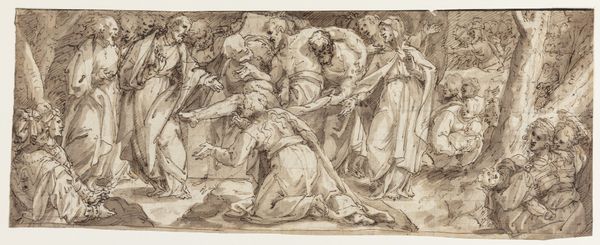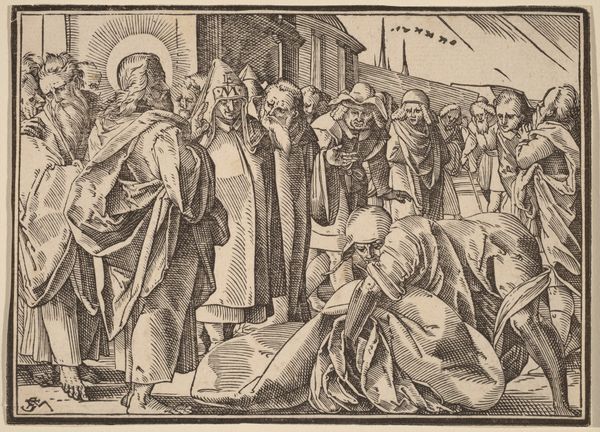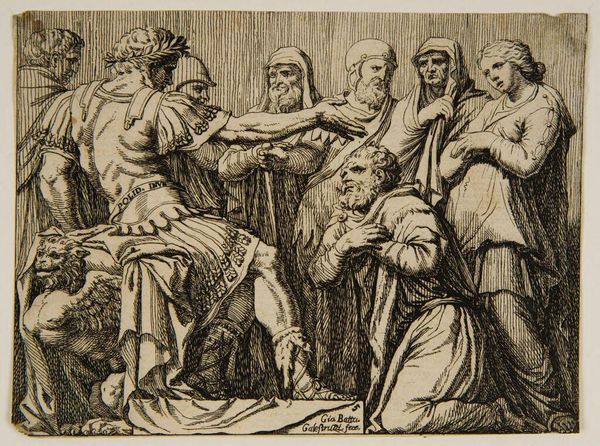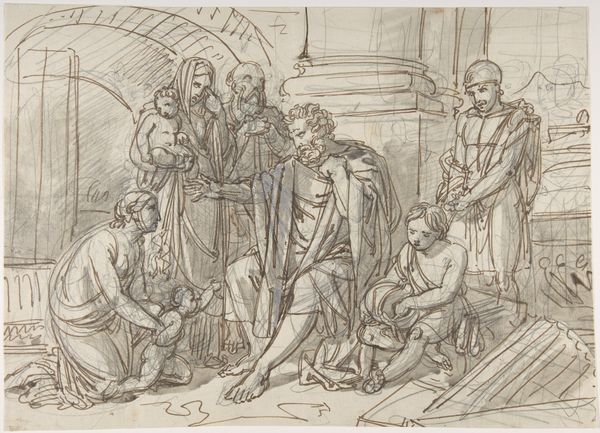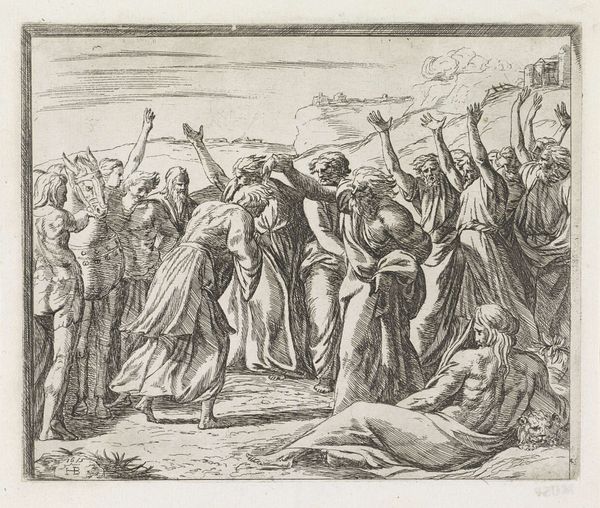
The family of Darius before Alexander and a scene with prisoners; from the facade of the Palazzo Milesi 1600 - 1700
0:00
0:00
drawing, ink
#
portrait
#
drawing
#
narrative-art
#
11_renaissance
#
ink
#
history-painting
Dimensions: 209 mm (height) x 420 mm (width) (bladmaal)
Curator: What immediately strikes me is the palpable grief etched on the faces. It's as though the artist captured a moment suspended in sorrow and reluctant respect. Editor: Indeed. This ink drawing from the late 16th or early 17th century, currently residing in the SMK - Statens Museum for Kunst, depicts 'The family of Darius before Alexander'. It's believed to be a sketch taken from the facade of the Palazzo Milesi in Rome. Note that its original artist remains anonymous. Curator: Anonymous yet incredibly skilled. I'm intrigued by how they've managed to convey so much emotion with what seems like a very limited palette. It's all monochrome drama. Editor: And it’s drama intentionally staged. The figures, rendered in a classical style, act as players in a public theatre. Remember, facades like the Palazzo Milesi served to display power and wealth, crafting specific narratives for the city’s inhabitants and visitors. Think of the drawing then as a reproduction of that message. Curator: So, not just a snapshot of a historical event, but also a carefully curated PR campaign for the patron displaying his good taste through visual allusion to history? Editor: Precisely. By presenting Alexander's magnanimity towards Darius' family, the patron perhaps aimed to project an image of cultured power, cleverly associating himself with themes of benevolence and triumph. Curator: There’s a tension in how Alexander's triumph and Darius's sorrow are almost intertwined. I keep oscillating between feeling empathy for the defeated family and awe for Alexander's implied generosity. It’s quite a mind game played through imagery. Editor: Absolutely. The artist leverages this tension to communicate a complex message about leadership, conquest, and perhaps even the burdens of power in a Renaissance social-political context. What narrative, I wonder, was its patron attempting to convey through his appropriation of antiquity? Curator: It makes you wonder, doesn't it? Not just about Alexander or Darius, but about who chose this scene, and what they were really trying to say, beneath the surface of history and art. Editor: It does, yes. It pushes us to ponder not just the history of great rulers, but the history of the stories that circulate, and how they continue to shape us, one carefully rendered drawing, and one carefully decorated facade, at a time.
Comments
No comments
Be the first to comment and join the conversation on the ultimate creative platform.
